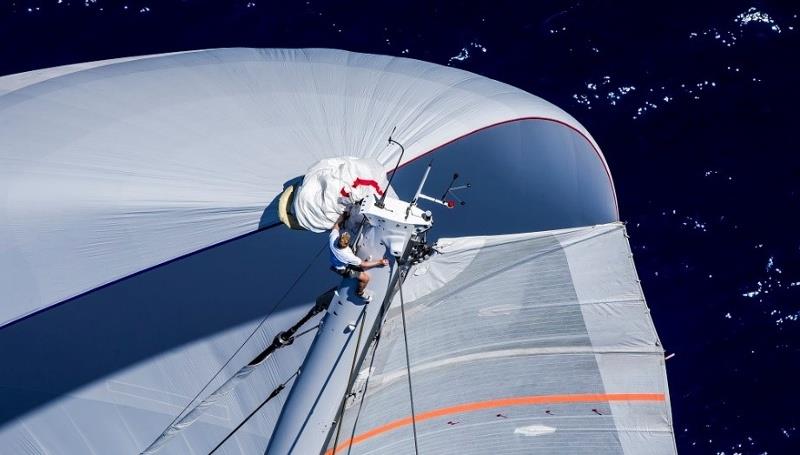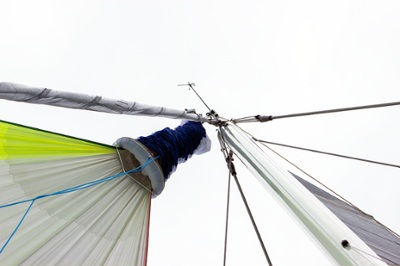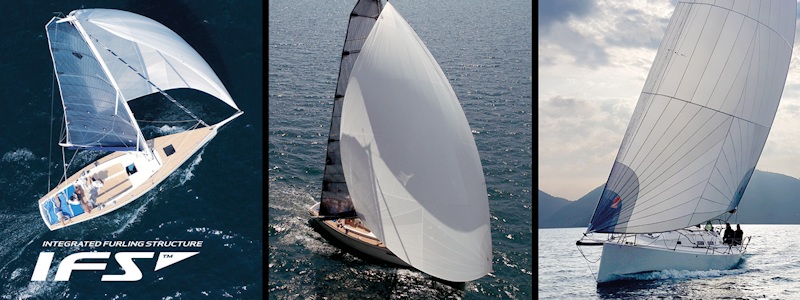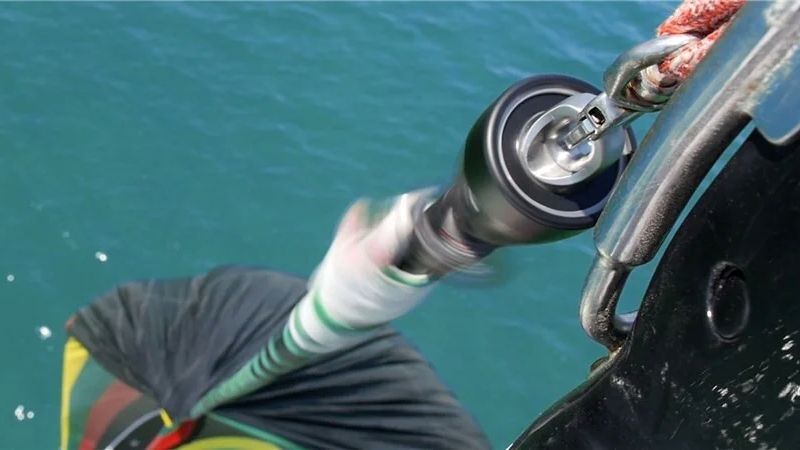
Spinnaker Snuffers - Better Than Furling?
by Calanach Finlayson 25 May 2023 01:00 PDT

Spinnaker Snuffers - Better Than Furling? © C-Tech
A snuffer is a simple, reliable method of dousing an asymmetric spinnaker. Despite advances in furling technology, snuffers remain the first choice for many offshore race yachts such as Class 40 and IMOCA.
In this article we look at how to select the correct length of snuffer for your sail, why snuffers dominate in short-handed offshore racing and where a furling asymmetric might be preferred. To help answer these questions we sat down with Nathan Steffenoni, co-director of OneSails GBR South. As you might expect, the considerations are very much case dependent, so Nathan was keen to caveat many of his responses.
Spinnaker dousing systems - do you need one?
The question of whether you need a snuffer, furler or other take-down system at all is primarily one of sail size and crew number. Introducing a snuffer or furler inevitably imposes some design constraints on the sail which are likely to impact its sailing performance. The 32ft Figaro 3 is sailed solo without any additional dousing system. A solo Class 40 on the other hand typically uses a snuffer.
Fully crewed yachts might use a drop string which has virtually no impact on sail design.
Snuffer size
As a general rule, snuffer length can be matched to leech length so that the clew is just visible when snuffed. This should douse enough of the sail that it won't catch wind and blow out.
However, for a very high clewed sail, this can sometimes leave too much cloth out of the sock. Extending the snuffer over the clew might seem like the obvious solution but this brings another snag as the clew can catch inside the mouth of the snuffer when raising. If you find yourself in this situation it's worth exploring the options with a sailmaker.
Snuffing versus furling
Let's begin by looking at snuffers and addressing the question of why they remain so prevalent in offshore race fleets, when modern continuous line furling systems might initially appear to be a slicker option.

As Nathan explains, if you are trying to build deep sails, you end up with a very long luff and this is where snuffers come in to play. All furling systems (top down and bottom up) impose a much greater limitation on max luff length.
A sail designed for snuffing can be very close in design to that without any dousing system, which also makes this a simple retrofit option.
The only design constraint imposed by a snuffer is the reduction in luff length due to the short strop on the head. It's important to get this strop length correct though: too long and you are wasting luff length; too short and the snuffer is always pinching the top of the sail, even when fully raised.
What if the objective is not to maximise luff length for downwind sailing?

"If you are looking for more of a reaching sail, we can make shorter luff lengths and so immediately you can have a very effective furling sail."
OneSails' IFS (Integrated Furling Structure) technology offers a bottom-up (BU) furling sail without the added bulk of a cable, making it a nice clean option for cruising / reaching but does limit the depth of the sail.
"You are constricted by the design parameters of IFS which force us to design the sail to a certain luff length and not build in extra length as we would for downwind sails."
Where the luff length of an A2 might be around 6% longer than the available space, IFS sails are generally constrained to 1-2%.
So what about top-down furling?

Top down (TD) furling sits loosely somewhere between BU furling and snuffers both in terms of sail design and handling. Luff length is still constrained but not as much as for a BU furling sail such as IFS.
From Nathan's perspective, the real niche of top-down furling is for a cruising boat either with an existing asymmetric or looking for a deeper cut sail than is possible with BU. Like a snuffer, a TD furling system is a separate piece of kit which can be added to a sail. "If you are not too obsessed with sailing super deep and just want something you can furl away easily without going onto the foredeck to manhandle a snuffer up and down then it makes sense to go with top-down furling".
TD furling is not without its complications though. The addition of a torsional cable, separate from the luff, presents another opportunity to wrap the sail if sailing too deep or when gybing. However, most of the potential pitfalls can be avoided in a cruising scenario where you are not pushing the system to its limits. Outside gybing is a must.
Summary:
- Most race yachts up to 40ft have little need for a spinnaker dousing system
- Smaller cruising yachts might add a snuffer or furler for ease of handing at the expense of sailing performance
- Snuffer length typically matches leech length, except for very high clewed sails
- Snuffers are the go-to option for deep, downwind sails on shorthanded racing yachts
- Cableless bottom-up furling sails like IFS offer simplicity and convenience for reaching sails on cruising yachts
- Top-down furling allows for deeper cut sails than IFS and can be added to existing asymmetrics
- If in doubt, speak to a sailmaker as snuffers and sails can always be modified
If you have any questions about spinnaker snuffers, please feel free to email us at , or click the link below to see our full range:
